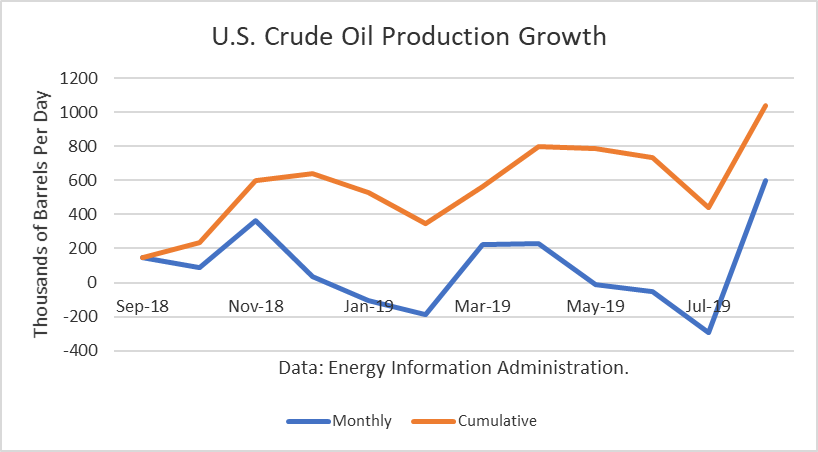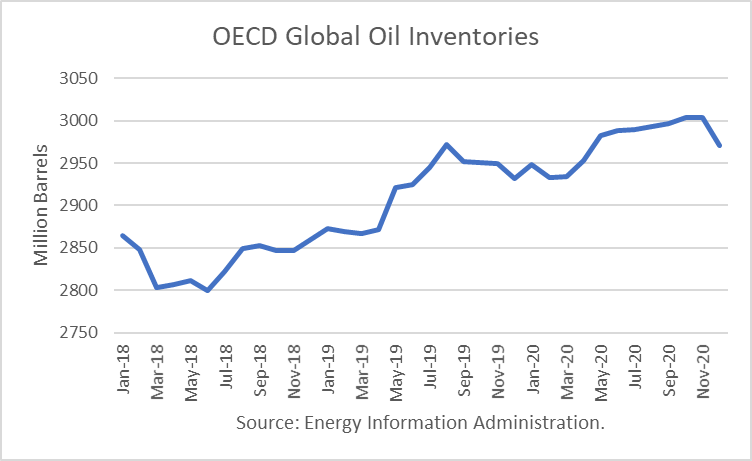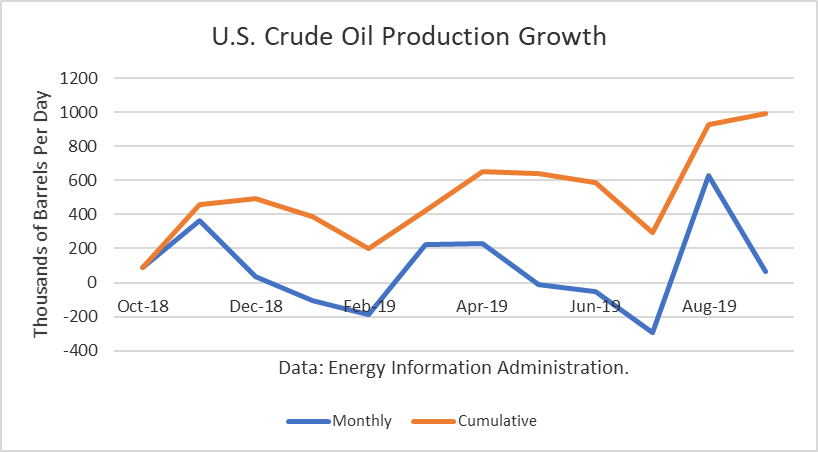The Energy Information Administration reported that August crude oil production averaged 12.365 million barrels per day (mmbd), up 599,000 b/d from July. The gain was primarily due to the fact that July production had dropped due to Tropical Storm Barry, which shut-in 9.2 million barrels, or 297,000 b/d for the month, based on real-time estimates. In addition, July production was revised downward by 40,000 b/d. Nevertheless, the net increase of around 250,000 b/d from the adjusted July figure was a large increase and confirms the EIA’s weekly estimates for the month.
Production in the Gulf of Mexico reached a new high at 2.006 mmbd. The previous record was 1.979 mmbd in April. Texas production also reached a new high of 5.121 mmbd, up 98,000 b/d from July. Other gains were 43,000 b/d in New Mexico, 28,000 b/d in North Dakota, 15,000 b/d in Louisiana and 12,000 b/d in Colorado. Alaska was down 66,000 b/d for seasonal reasons, and that production is likely to return.
Plains All American Pipeline LP’s (PAA) Cactus ll pipeline was expected to ship 300,000 b/d in August and to be at full capacity, 670,000 b/d, in September. EPIC Midstream’s crude oil pipeline began shipping 400,000 b/d. It is designed to ship 440,000 b/d from the Permian and another 150,000 b/d from the Eagle Ford.
Phillips 66 Partner’s Gray Oak pipeline is expected to ship an additional 900,000 b/d. It is scheduled to being shipments by year-end.
The effect of the pipeline additions will narrow the spread between Midland and the U.S. gulf prices, effectively lowering breakeven costs in the Permian.

Continue reading "U.S. Crude Production Surged In August" →





